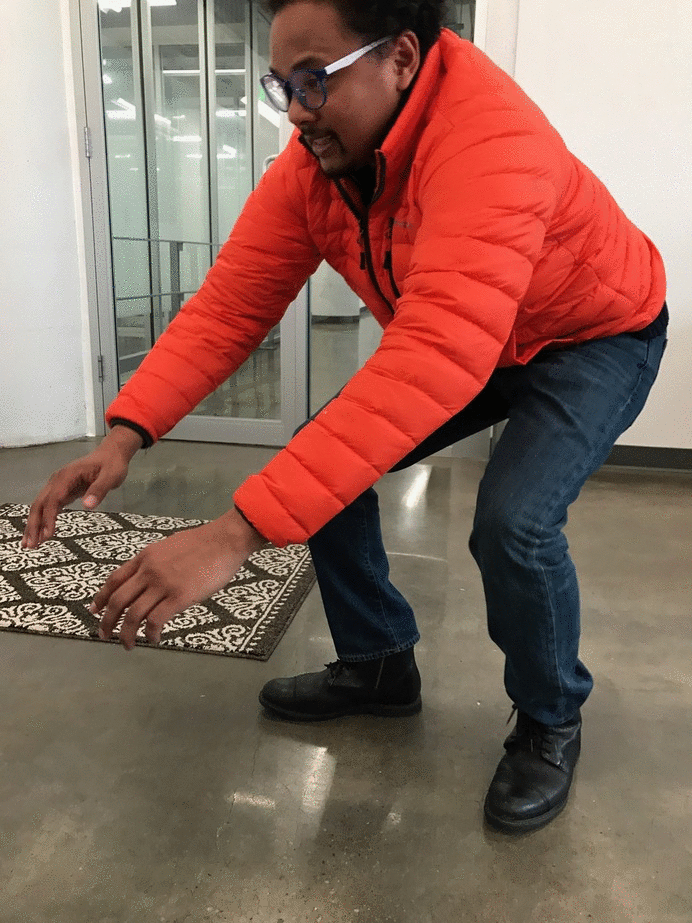
CAN YOU DO THE ASIAN SQUAT?
Walking down the hustling streets of any country in Asia, you’ll start to notice a pattern. No, it’s not the food, or the different language (you should have noticed that earlier). This pattern has to do with the unique way in which many Asian people sit. The distinctive squatted position is the result of many generations of tradition and habit. The Asian Squat is notorious for being impossible to do for anyone who’s NOT Asian. Indeed, it doesn’t come naturally for everyone. Us poor Westerners may be able to remain in the correct position for a few seconds – minutes at best. However, the people of Asia can squat for hours on end!
FIRST, LET’S TRY!
We had John from the BEFORE team demonstrate the Asian Squat for us. Here’s how that went:

Here is a step by step guide to successfully completing an “Asian Squat”:
1. Stand with your feet shoulder width apart
2. Lower your body until your bottom touches (or comes close to touching) your heels
3. Rest your armpits on your knees for better balance
(Make sure your heels are on the floor!)
Getting your feet flat on the ground seems to be the biggest challenge for Westerners. Practice for a few minutes a day and slowly elongate the resisting muscles. The important point to remember is to ensure proper balance to keep the stress off of the knee joints, which is one of the advantages of the “Asian Squat”.
Reports of arthritis are higher in those who place stress in the knee joints. Falling out of proper posture is more of a risk for newbies. With tight muscles, you may try to lean forward to ease the strain which, in turn, places the strain on the knees. Try to avoid this!
WHERE CAN YOU WITNESS THE ASIAN SQUAT?

The “Asian Squat” is very common in Asia. When exploring India, Korea, Vietnam, China, and many other Asian countries, the Asian Squat (also referred to as the kimchi squat) is as common as noodles and rice.
HISTORY OF THE ASIAN SQUAT
The famous “Asian Squat” migrated (read: squat hopped) from India to Asia, predating modern furniture.
Recently, scientists have found that frequent squatting actually leaves a record in people’s bones. It’s called a “squatting facet” and can be found in the ankle joint. Basically, infants are born with this facet from being in the foetal position during pregnancy, but only people who frequently squat during childhood and adulthood retain the markers on their ankle bones.
In cultures where squatting is part of life, squatting facets are well formed. In these societies, frequent squatting is often associated with low cooking stoves like cooking over an open fire. It can also be associated with planting and harvesting rice, which involves spending hours in the fields squatting among the shoots.
Scientists have analysed 100,000-year-old Stone-Age bones that were discovered in South Africa. They concluded that due to extra growth of bones in the foot, that they engaged in squatting quite frequently. Archaeological evidence also suggests that Europeans used to squat frequently through the Middle Ages until different stoves and furniture caused living spaces to be rearranged, and lead people to sit more and squat less often.
In the modern era, in societies where people mostly sit and stand, and rarely squat, facets are no longer evident or are poorly developed. Is it any wonder why Western adults fare so poorly when it comes to squatting? Yet there is hope for those who desire to change all this! With determination and regular practice, squatting facets can develop and come back again…and with it, the ability to squat. Yahoo!

PRACTICAL BENEFITS OF THE ASIAN SQUAT
If you ever have the privilege of traveling to a country in the East, you’ll see squatting practiced simultaneously with other activities such as cooking, eating, playing cards, reading a book, and smoking. Most people have been squatting since they were children, and they continue to squat as grandparents! It’s a position that can be resumed under any circumstances, and has the added benefit of not requiring furniture. In the streets, people play cards and other games wherever they desire. No card table is required. Gathering for meals also is easy. In many parts of Asia, there are no formal toilets, so the squatting position is vital.
Waiting for the subway seems to be the perfect time to use the “Asian Squat”. Especially on crowded subway platforms, where people are standing for long periods of time waiting for the next train. Here are some images from Vietnam and North Korea of this in practice.
1. INCREASED MUSCLE FLEXIBILITY AND SKELETAL BENEFITS
So why is it that Westerners can’t do it? Studies show that there are a number of tendons in the ankle area that our squatting friends exercise while doing the squat. It also requires hip and knee flexibility that many of us seem to lack due to a shortage of practise. Most muscles from the waist down are worked as you squat. Fortunately, there are many benefits! Squatting can also lead to strengthened muscles, and better flexibility and balance.
Ankle Mobility
Limited ankle range of motion is a common problem linked to a number of other issues in the body, including bad posture and runner’s knee. A loss of ankle mobility is caused by both inflexibilities in the calf muscles and Achilles tendon, and stiffness in the joint. A proper squat, with the heels flat on the floor, requires good flexibility at the ankle. Getting into and maintaining a full squat is a great way to improve ankle mobility.
Back Pain Relief
Many people have lower back pain due to excessive curvature. During a full depth squat, the pelvis rotates backwards, allowing the spine to elongate. This stretches the tight or shortened muscles in the low back.
Hip Strengthening
Complaints about weak hip muscles are very common. Often, weak hips result in internally rotated movements. A full squat moves the hips in the opposite position, to rotate outwards. The squat strengthens the muscle groups responsible for performing these actions, allowing them to better control the position of the entire leg.
Glute Strengthening
Get those butts to work! Your gluteus maximus is one of the largest muscles in the body and is integral to activities we complete on a daily basis, like walking, lifting, and running. Studies have shown that during a squat the glute muscles become targeted after descending past the half way point. Coming in and out of a deep squat is by far one of the most effective ways to strengthen the glutes.
Correcting Posture
The entire skeletal system will naturally be able to assume better alignment, once joint mobility and lower body strength are improved. This can have a tremendous impact on posture. The full squat is a way to reverse some of the bad habits the body has adopted from our modern lifestyle.

2. YOU CAN MAKE KIMCHI OR DO OTHER THINGS WITHOUT NEEDING A CHAIR
The “Asian Squat” allows many people to multi-task and complete tasks that require particular exertion. For example, Koreans make Kimchi (a delicious spicy pickled cabbage) for hours on end, simply by squatting.
Other activities that are useful include playing games, watching sport and television and waiting for public transport. Or, simply having a conversation! When planting and growing, picking up things, cleaning, cooking, washing, childbirth and emptying the bowels, the “Asian Squat” is suitable for all circumstances. Ok, now we’re super jealous.
3. USE THE TOILET ANYWHERE
What you will also find is that many toilets in the Eastern Hemisphere are set into the ground, which means you and the trusty “Asian Squat” will have to become best friends. Be sure to warn your travel buddies when you encounter a squatter (as it does take a little bit of mental preparation!)
Experts say that the squat position is actually very good for your bowels and the movement of your bowels on the toilet. Squatting while on the toilet makes it quicker and easier, because it protects the nerves and it relaxes the muscles. If that isn’t a reason to start squatting, I don’t know what is!
Of course, most of us won’t find it all that easy to squat on the toilet, because modern toilets just aren’t designed for that position. For assistance in this process, Amazon sells a brilliant product. We found from personal experience, that it makes the ideal Christmas present.
Nguồn: Before Travel
Tham khảo thêm:

No comments:
Post a Comment